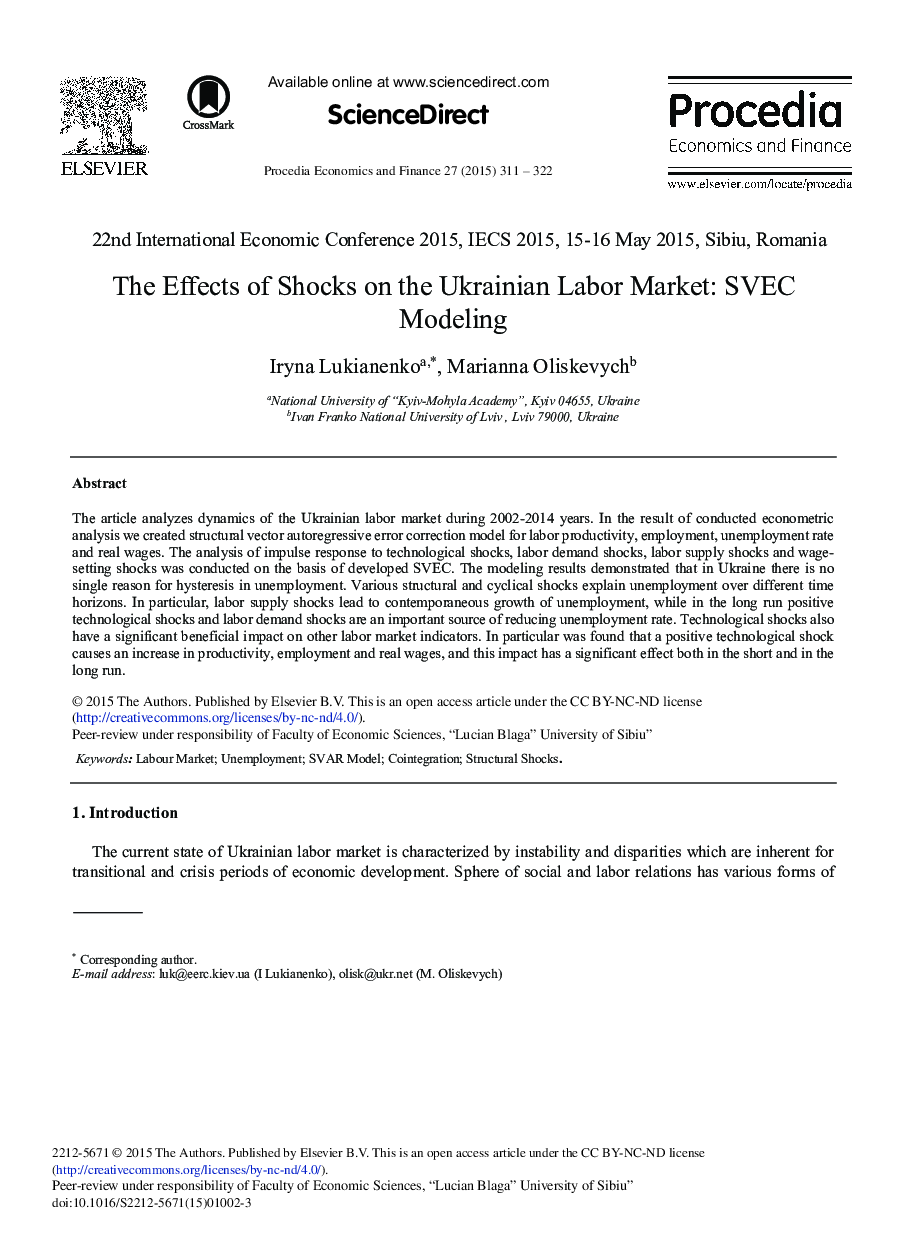| Article ID | Journal | Published Year | Pages | File Type |
|---|---|---|---|---|
| 982807 | Procedia Economics and Finance | 2015 | 12 Pages |
The article analyzes dynamics of the Ukrainian labor market during 2002-2014 years. In the result of conducted econometric analysis we created structural vector autoregressive error correction model for labor productivity, employment, unemployment rate and real wages. The analysis of impulse response to technological shocks, labor demand shocks, labor supply shocks and wage-setting shocks was conducted on the basis of developed SVEC. The modeling results demonstrated that in Ukraine there is no single reason for hysteresis in unemployment. Various structural and cyclical shocks explain unemployment over different time horizons. In particular, labor supply shocks lead to contemporaneous growth of unemployment, while in the long run positive technological shocks and labor demand shocks are an important source of reducing unemployment rate. Technological shocks also have a significant beneficial impact on other labor market indicators. In particular was found that a positive technological shock causes an increase in productivity, employment and real wages, and this impact has a significant effect both in the short and in the long run.
